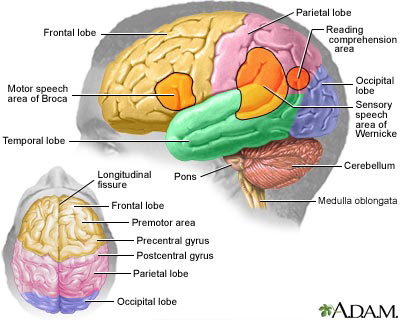What Eggsactly is the Story About Egg Safety
- At March 26, 2019
- By Katherine
- In Articles, News
 0
0
The media thrives on hype and its latest target is the egg, a low calorie, inexpensive, source of protein and hard-to-get nutrients.* It is now being blamed for heart attacks and premature death.
Happily, the overwhelming evidence from many well-respected studies show that it is ok to eat an egg.
The media has focused on a single new study published in the Journal of the American Medical Association (JAMA) that concluded: “Among US adults, higher consumption of dietary cholesterol or eggs was significantly associated with higher risk of incident CVD [cardiovascular – heart – disease] and all-cause mortality [all causes of death] in a dose-response manner.”
However, a well-regarded review of 17 studies found that: “Higher consumption of eggs (up to one egg per day) is not associated with increased risk of coronary heart disease or stroke.”
Further, the recent JAMA study has been criticized for its weak design. Indeed, the authors admitted that they could not rule out other foods or lifestyle issues causing the spike in CVD and death rates. For instance, did the subjects eat eggs with buttered white toast or bacon, as people often do? If so, there is a large body of evidence showing that buttered white bread or bacon would be the more likely offenders in spiking CVD or early death.
JAMA study results stated that there is this flaw. It said: “The associations between egg consumption and incident CVD … and all-cause mortality … were no longer significant after adjusting for dietary cholesterol consumption.
In other words, eggs may have had little or nothing to do with increasing CVD risk, while cholesterol may have.
Besides the admitted weakness, in the JAMA study, there are other unanswered questions:
Did the researchers analyze red meat intake? It is well-established that red meat is associated with increased CVD risk and all causes of death, and red meat happens to be high in cholesterol. Could the cholesterol in red meat have been responsible? The JAMA researchers said themselves that they could not tease out all factors leading to the increased CVD and death rates they observed.
Did they analyze saturated fat content? Saturated fat is a more established culprit behind heart disease, according to a Harvard study (among many others) and the American Heart Association.
Cholesterol is in all animal foods. And, we know that foods like red meat are strongly linked to CVD and all causes of death – and are also high in saturated fat.
In short, the JAMA study did not shed any further light on what foods are responsible for increased CVD. While any number of well-respected studies show that it is ok to eat an egg.
* Here are some ways you may benefit from eating eggs…
Protein. Eggs are considered the gold standard against which other proteins are measured. Because of the superior amino acid mix, an egg’s seven grams of protein are absorbed easily and efficiently used by the body. The egg is also low-calorie (74 calories).
Choline. Yolks are one of the best sources of this essential nutrient. Choline is needed for brain development in a growing fetus and may also be important for brain function in adults.
Lutein and Zeaxanthin. These two, important, beneficial nutrients found in egg yolks (as well as kale and spinach) help prevent eye diseases, especially cataracts and age-related macular degeneration. While eggs contain less lutein and zeaxanthin than greens, they are more absorbable because of the presence of fat in the yolk.
Vitamin D. Eggs are one of the few natural sources of Vitamin D, important for the bones, teeth, and possibly reductions in heart disease, cancer and a myriad of other diseases.
13 Surprising, Simple & Powerful “Foods As Medicine” You Should Try
- At March 21, 2018
- By Katherine
- In Articles, News
 0
0

A responsibility I take very seriously – and one I avidly enjoy – is discovering the best nutrition therapy, or “Foods as Medicine,” for each of my clients’ unique life enhancing, healing needs, and even for improving some rare conditions. Over the years, I’ve come across some very simple, strange, and powerful solutions which have been successful and ones from which you might benefit.
Tea for increasing bone and muscle strength: Studies are finding that regular tea drinking may reduce age-related inflammation and oxidation causing muscle and bone breakdown resulting in increased bone mass and muscular strength.
Green Tea for speedier weight loss: Certain compounds in tea, and especially green tea, have been found to burn body fat. Caffeine slightly increases fat-burning, but the combination of caffeine and green tea catechins [a type of flavonoid] is even more effective.
Chocolate improves erectile dysfunction: The flavanols in cocoa help maintain a healthy vascular system, relax blood vessels, reduce blood clotting, oxidative damage, and improve blood flow – to every part of the body.
Chocolate reduces wrinkles: After drinking cocoa for 24 weeks, women experienced reduced wrinkles and increased skin elasticity, reducing the effects of sun damage and aging.
Mushrooms boost the immune system, improving diseases from colds to cancer. Used medicinally since at least 3,000 BCE, mushrooms appear to increase the effects of chemotherapy, and lengthen survival of cancer patients. Mushrooms, considered “pre-biotics,” enhance the digestive tract’s healthy bacteria, the “microbiome,” thus providing your body with extra disease-fighting properties.
Mushrooms reduce fatigue: They act on the muscular system, the body antioxidant system, cardiovascular system, hormone system, and immune system, all of which improve liver function, blood circulation, and blood glucose regulation, among other benefits.
Tart cherries (dried or concentrated) and tart cherry juice reduce pain from gout and neuropathy, improve muscle recovery after intense exercise, and enhance sleep quality: Scientists hypothesize that the presence of hundreds of compounds – especially anthocyanins – in cherries are responsible for the benefits. But there are probably as yet undiscovered properties which contribute to their health strengthening qualities.
Hydrolyzed Collagen reverses the pain of arthritis, the aging of joints, bones, muscles, skin, and reduces cellulite. Collagen is the most abundant protein in the animal kingdom important for joints, bones and skin. Taken as a supplement, collagen needs to be “hydrolyzed” into tinier molecules called “collagen peptides” so it can effectively enter your body’s cells and your body can utilize it.
Coffee extends exercise performance: Once banned by the International Olympic Committee, caffeine stimulates the neuromuscular system to increase your body’s ability to exercise longer, with less fatigue, than it would absent caffeine.
Yogurt reduces body fat: The probiotic cultures in yogurt have been found to prevent insulin resistance, diabetes, and body fat. People who eat yogurt are leaner than those who eschew.
Egg yolks reduce cataracts and macular degeneration, the leading cause of blindness: Egg yolks contain compounds called lutein and zeaxanthin, also found in deep leafy greens. But they’re more powerful in egg yolks because lutein and zeaxanthin need to be eaten with fat, found in egg yolks (but not in greens), to be effective.
Beans clear acne and improve skin: There is strong evidence that a diet with foods causing the lowest blood sugar responses (a low glycemic diet) may be the best solution for clear skin. Beans are not only nutritious, but are very low on the glycemic index scale.
Extra Virgin Olive Oil – but ONLY when newly harvested – reduces metabolic syndrome: The nutrients in olive oil, polyphenols, responsible for its superior health benefits, disappear with time, light, and heat exposure. But when high in polyphenols, for instance, the first six months after harvest, EVOO “turns on” several genes which lower blood glucose, blood cholesterol and blood pressure,
Salmon reduces Alzheimer’s Disease (AD): Studies show inflammation is a major cause of AD and cognitive decline. Omega-3-Fatty Acids, which salmon contains in abundance, have proven abilities to reduce inflammation.
Nuts for weight loss: Even though nuts are quite caloric, people eating nuts are more likely to have lower body weights. Nuts are satiating; they make us feel full. Adding nuts to meals, especially breakfast, decreases overall calorie intake, making weight loss easier.
Potatoes have sustained many cultures for thousands of years. Think Russia, Scandinavia, Ireland, South America. Without potatoes, Vitamin C deficiency would have flourished. Especially in northern climates where citrus fruit and many other high vitamin C fruits and vegetables cannot be grown. They have an undeserved bad rap! They’re filled with fiber, potassium, Vitamin B-6, some iron, and – believe it or not – they are low calorie for a starchy food, only 110 calories for 5.3 ounces. Eaten plain, the concern is real, though. as they raise blood glucose quite high. But eaten with fat such as when they are sautéd or roasted in oil, eaten with a proten, such as salmon or chicken, even Greek yogurt instead of sour cream, as they would be in a meal, those foods will lower the blood sugar response (glycemic index) to much lower levels.
Enjoy!
Carla Hall’s Hearty Greens Salad with Warm Balsamic Cherry Vinaigrette
- At March 16, 2012
- By Katherine
- In Recipes
 0
0
Carla Hall’s Hearty Greens Salad with Warm Balsamic Cherry Vinaigrette
Excerpted from “Diet Simple”
8 servings
6 c (1 pound) Mixed Hearty Greens (Kale, Rape, Collards, and/or Mustard), washed well, stems removed, rolled and cut thinly (chiffonade)
4 T Canola Oil
2 T Balsamic Vinegar
1 T Dijon Mustard
2 t Honey
Salt and Pepper to taste
½ c Cherries, pitted and halved
¼ Red Onion, sliced thinly
1. In a medium saucepan, heat the oil over medium heat.
2. While the oil is heating, combine the balsamic, mustard and honey in a small bowl. Just before the oil starts to smoke, add the balsamic vinegar and stir to combine. Let the mixture come to a boil, and continue to stir.
3. If it is too thick or too strong with vinegar, add a dash of water. Season with salt and pepper.
4. Add the cherries to the mixture. Toss the greens with just enough vinaigrette to wilt the greens, then drizzle additional vinaigrette around the plate. Garnish the salad with rings of red onion.
Deep Green Leafy Vegetables have the highest antioxidant content of all vegetables. High in fiber, they are rich in minerals, B-vitamins, beta-carotene, and lutein, a compound which may help reduce the risk of age-related macular degeneration (the leading cause of preventable blindness). Absorption of carotenoids, such as lutein, in your body is increased by cooking and by the presence of fat (so cook in a little healthy olive or canola oil!).
Carla Hall, Top Chef finalist, is the owner and chef of Alchemy Caterers, a catering and private chef company in Washington, D.C. She teaches cooking classes at Culinaerie, as well as team building classes at different venues in the metropolitan area.
Kale Recipe Quest: Making this “Superfood” Delicious!
- At March 16, 2012
- By Katherine
- In News, Recipes
 0
0
Kale: does it evoke rapture? Anticipation? I fear you may be scrunching your face at the mention of kale. I completely understand! I’m constantly looking for ways of making kale and other deep green leafy vegetables delicious, and regularly surprised at how easy it actually is. If you can let go of any skepticism and trust me on this, I think you will be very pleased, too…
Do you have kale recipes you’d like to share? In my “Kale Recipe Quest,” here are some of my favorites. I’d love to know what you think…
Carla Hall’s Hearty Greens Salad with Warm Balsamic Cherry Vinaigrette
Roberto Donna’s White Beans, Kale and Shrimp Salad with Basil Dressing
Janis McLean’s Kale Quesadillas with Chipoltle Salsa
Eggs Scrambled with Onions, Garlic, Kale and Sweet Cherry Tomatoes
Deep Green Leafy Vegetables have the highest antioxidant content of all vegetables. High in fiber, they are rich in minerals, B-vitamins, beta-carotene, and lutein, a compound which may help reduce the risk of age-related macular degeneration (the leading cause of preventable blindness). Absorption of carotenoids, such as lutein, in your body is increased by cooking and by the presence of fat (so cook in a little healthy olive or canola oil!)
Maximizing Brain Health: Do’s and Don’ts
- At February 08, 2012
- By Katherine
- In Articles, News
 9
9
My clients regularly ask me: Do certain foods affect my brain and cognition?
My answer: an emphatic Yes! What you eat profoundly affects the brain, memory, and mental function.
Are you eating “Smart” foods? Please let me know by commenting at the end of this article in “Comments.”
“Nutrients are essential for brain function, and because all human beings must eat, we are all exposed,” said Martha Clare Morris, at a National Institutes of Health conference on brain function and preventing cognitive decline.
“The dietary components with the strongest evidence to date for dementia prevention include antioxidant nutrients, fat composition, and B vitamins,” said Morris, director of Nutrition and Nutritional Epidemiology at Rush Medical College in Chicago.
Antioxidant Nutrients
“The brain is particularly vulnerable to oxidative damage due to its high metabolic activity and the presence of relatively few antioxidant enzymes… Antioxidant nutrients (vitamin E, vitamin C, carotenoids, flavonoids) are a natural defense mechanism… Of the antioxidant nutrients, the evidence for brain protection is strongest for vitamin E; that for carotenoids, vitamin C, and flavonoids is limited and inconsistent but promising,” said Morris.
But when it comes to nutrients, both too little or too much can be dangerous. So I recommend you get those nutrients from food, not from supplements, which can be harmful and may disturb the natural nutritional balance of your brain.
Some examples of foods high in brain-protecting antioxidant nutrients:
Vitamin E: Sunflower seeds, almonds, sunflower oil, safflower oil, canola oil, hazelnuts, pine nuts, spinach, turnip greens, beet greens, dandelion greens, canned pumpkin, carrot juice, broccoli, sweet potato, sweet red peppers, mangos, papayas
Carotenoids, such as Beta-Carotene (orange), Lycopene (red), and Lutein (yellow/green): Orange, red, and deep green veggies and fruits, particularly…Carrot juice, carrots, butternut squash, pumpkin (or any orange-colored winter squash), sweet potato, greens such as spinach, collards, kale, turnip greens, beet greens, avocados, orange melons such as cantaloupe, red peppers, apricots, broccoli, plums, mangos papayas, plantains, Brussels sprouts, watermelon, asparagus, tomatoes, watermelon, pistachios
Vitamin C: Citrus fruits such as orange, lemons and grapefruit, peaches, sweet and hot peppers, papayas, pineapple, strawberries, broccoli,kiwi fruit, sweet potatoes, Brussels sprouts, kohlrabi
Flavonoids: Cocoa, green and black tea, citrus fruits, dark chocolate, red wine, apples, grapes, berries (read “Berry Bonanza” for more facts about berries), numerous fruits and vegetables. Tea is filled with antioxidants and anti-inflammatory nutrients, both of which reduce brain decline, and even slow down muscle and bone breakdown. Read about tea’s health benefits in my recent Washington Post article.
Fat Composition
Fat is an essential nutrient. But the type of fat you eat trumps everything. Fat ends up in all of your body’s cells, including your brain cells. It acts as a cell lubricant, improves flexibility and communication between cells. If the fat you eat is saturated – solid at room temperature – as in butter or animal fat – this stiffens and decreases cellular flexibility and functioning. Saturated fat also raises LDL cholesterol, and high cholesterol is correlated with cognitive decline. This may be why people who eat diets high in meat and animal fats suffer from a higher rate of dementia and Alzheimer’s.
A diet high in fish, on the other hand, is correlated with a reduced incidence of brain decline. Fish oil – omega-3-fatty-acid – concentrations are highest in the brain and nervous system. They are necessary for optimal functioning of the neurons, protect cells, decrease cell death and improve nerve transmission. Emerging research indicates Omega 3s may boost levels of the brain chemicals serotonin and dopamine, decreasing depression and violence.
“In 5 out of 6 of the clinical trials where people were given either a placebo or omega-3 fatty acids, on average, the symptoms of depression have been reduced by about 50%,” says Joseph Hibbeln, a psychiatrist at the National Institutes for Alcohol Abuse and Alcoholism. “This is true even when the subjects were already on anti-depressants and failing to respond to them.”
Hibbeln’s studies found an increase in depression, violence and homicides in countries who eat less fish as compared to countries who eat more fish. It may even improve conditions such as bipolar disorder and schizophrenia.
B Vitamins
“Vitamin B12 and folate … are widely believed to be protective risk factors of cognitive decline and Alzheimer’s disease,” said Martha Clare Morris. “Vitamin B12 deficiency results in a neurologic syndrome that involves impaired cognition. Recent interest in folate deficiency as a risk factor for dementia is primarily due to its effect on raising homocysteine concentration, which has been related to the risk of developing Alzheimer’s disease… Both low vitamin B12 and low folate status are associated with cognitive decline, and high folate exposure in persons with low vitamin B12 also may be associated with cognitive decline,” said Morris.
Balance is key, so eat food high in these nutrients instead of risking an imbalance caused by an overdose.
Folic Acid (Folate): Spinach, lentils, pinto beans, black beans, blackeyed peas, greens, soybeans, broccoli, asparagus
Vitamin B12: Found naturally only in animal foods such as seafood, chicken, fat free or low fat yogurt, milk
Smart Lifestyle
Physical Activity is the primary lifestyle factor impacting your brain’s health, as well as cardiovascular disease and diabetes prevention.
“Physical activity and exercise have been found, over the past several decades, to reduce the risk of a multitude of diseases including cardiovascular disease, breast and colon cancer, obesity, and type II diabetes,” said Arthur F. Kramer, at the National Institutes of Health’s conference on brain function and preventing cognitive decline. “Many of these diseases have been associated with diminished cognitive and brain health and serve as risk factors for age-associated neurodegenerative disorders such as Alzheimer’s disease. Therefore, physical activity appears to enhance cognition and brain health through disease reduction and prevention, but also has more direct effects on both brain health and cognition,” said Kramer, professor of psychology and neuroscience, Beckman Institute, University of Illinois, Urbana.
Mood
During just one exercise bout, your brain releases chemicals called endorphins into the blood stream. They reduce pain, increase feelings of well-being and elevate your mood. If you are regularly physically active, these benefits multiply. A study published in the Archives of Internal Medicine found that a brisk 30-minute walk just three times a week relieved major depression just as effectively as an antidepressant in middle-aged and older people.
Mental Alertness
Physical activity increases the oxygen to your brain, particularly the frontal regions where it increases reaction times, as reported in the journal, Nature. Physical activity also improves memory, mental function and reduces your chances for dementia and Alzheimer’s disease. Those who walked 18 miles or more per week experienced the most improvements. These studies were reported in the Archives of Internal Medicine and the journal, Neurology.
Social Networks
“A rich social network may provide better social support and consequently better access to resources and material goods. Large social networks also may enhance brain reserve by providing intellectual stimulation,” said Laura Fratiglioni at NIH’s conference on brain function and preventing cognitive decline. “In addition, neuropathological data have shown that subjects with a similar amount of neuropathological lesions had higher cognitive performances if they also had larger social networks,” said Fratiglioni, Professor of Geriatric Epidemiology, Karolinska Institute in Stockholm, Sweden.
Leisure Activities
Most studies have suggested “a protective effect of leisure activities, especially mentally stimulating activities, against dementia,” said Fratiglioni. “These activities, which include reading, playing board games and musical instruments, knitting, gardening, and dancing, often have been associated with a reduced risk of dementia. Furthermore, a recent review of prospective studies also has concluded that physical activity may reduce the risk of Alzheimer’s by approximately 45%. However, most physical activities also include social and mental components in addition to the physical component. Indeed, complex leisure activities composed of all three components of physical, mental, and social activities seem to have the most beneficial effect.”
Are you engaging in a “Smart” Lifestyle? Eating plenty of “Smart” foods? Please comment below in “comments,” and let me know how you are doing!













